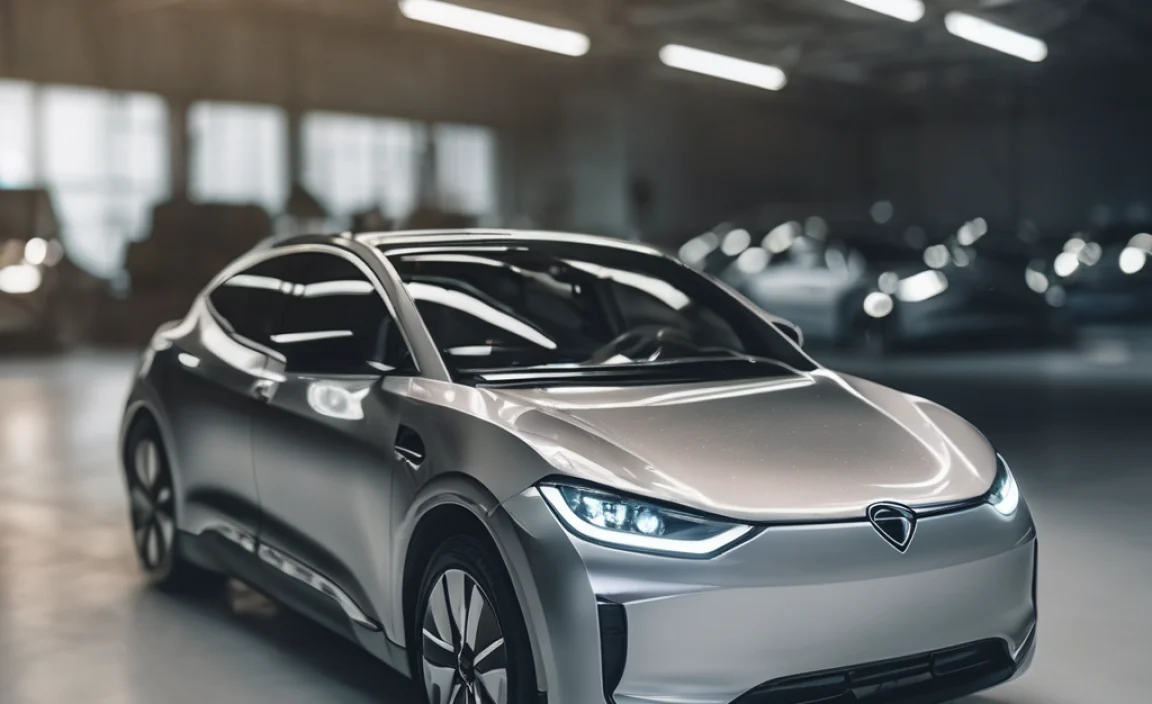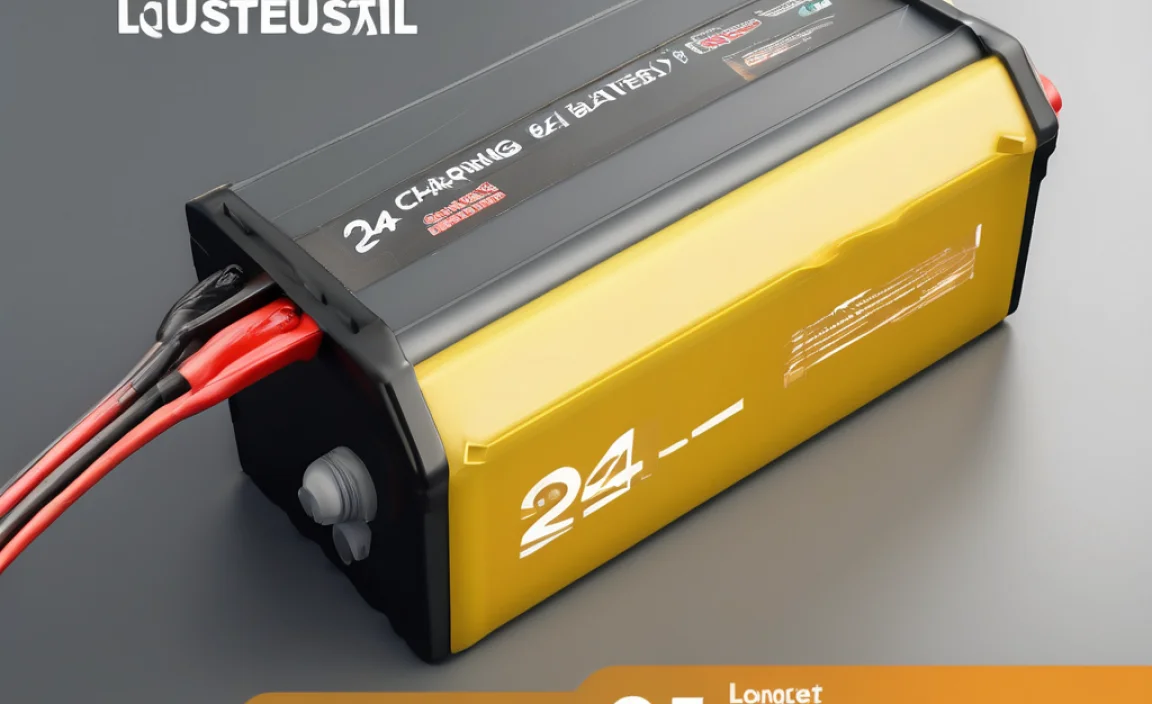For Morocco, you’ll need a Type C or Type E plug adapter. Morocco uses 220V, 50Hz electricity, so most of your modern electronics (like phones and laptops) will work with just a plug adapter. Always check your device’s voltage rating to be sure.
Planning a trip to Morocco is exciting! You’re probably thinking about the bustling souks, delicious tagines, and stunning landscapes. But one little detail can trip you up if you’re not prepared: electricity. Different countries have different plug shapes and voltages. It can feel a bit daunting, but don’t worry! Getting the right power adapter for Morocco is super simple once you know what to look for. I’m Roy Walker, and I’ll walk you through exactly what you need, making sure all your gadgets stay charged and ready for amazing photos and staying connected. We’ll cover everything from plug types to voltage, so you can focus on enjoying your adventure.
Why You Need the Right Power Adapter for Morocco
It’s a common travel snag: you arrive at your hotel, reach for your phone charger, and realize your plugs just won’t fit into the wall socket. This is where a power adapter comes in handy. It’s a small device that bridges the gap between your country’s plugs and the sockets in Morocco.
Morocco uses a different electrical system than many other countries, particularly in North America. Without the correct adapter, you won’t be able to power up your essential devices like phones, cameras, laptops, or even hair dryers. This can be frustrating and inconvenient, especially when you rely on these gadgets for navigation, communication, or capturing memories.
The good news is that modern electronics are often designed to handle different voltages, but the plug shape is the first hurdle. This guide will explain the specific plug types, voltage, and frequency you’ll encounter in Morocco, and how to choose the perfect adapter so you can power up with confidence. Let’s dive into the details!
Understanding Moroccan Electrical Standards
Before we get to the adapters, it’s important to understand the electrical standards in Morocco. This knowledge will help you decide if you need more than just a simple plug adapter.
Voltage and Frequency
Morocco operates on a standard voltage of 220V with a frequency of 50Hz. Compare this to countries like the United States and Canada, which typically use 120V at 60Hz. This difference in voltage means your devices need to be compatible, or you might risk damaging them.
Fortunately, most modern electronics, such as smartphones, laptops, and many camera chargers, are designed with “dual voltage” or “universal voltage” capabilities. This means they can automatically adjust to different voltage inputs, usually ranging from 100V to 240V. You can usually find this information on the small label or brick of your charger or device. Look for text that says “INPUT: 100-240V ~ 50/60Hz”. If your device falls into this category, you’ll likely only need a plug adapter.
However, if you have older electronics or devices specifically designed for a single voltage (like some hair dryers, curling irons, or travel appliances), you might need a voltage converter in addition to a plug adapter. A converter actually changes the voltage from 220V down to 120V. Using a high-power appliance not designed for 220V with just a plug adapter can cause it to overheat or burn out, and it’s a significant safety risk.
Always double-check the label on your electronic devices! If it only lists 110-127V, you absolutely need a voltage converter.
Common Plug Types in Morocco
Morocco primarily uses two types of electrical outlets, and they are quite common across Europe:
- Type C (Europlug): This is the most prevalent type in Morocco, and indeed across much of Europe. It features two round pins. This plug is ungrounded.
- Type E: This plug type is also found in Morocco, though less common than Type C. It also has two round pins, but it includes a hole for a grounding pin that protrudes from the socket. The Type E socket is designed to accept both Type C and Type E plugs.
The key takeaway here is that if your device has standard two-pin European plugs (Type C), they will fit. If your device has plugs that are slightly thicker or have a socket for a grounding pin (Type E), they will also fit.
What You’ll Need: Plug Adapters vs. Converters
This is where a lot of travelers get confused. Let’s clear it up.
Plug Adapters
A plug adapter simply changes the physical shape of the plug on your device so it can fit into the foreign wall socket. It does NOT change the voltage. Since most modern electronics are dual-voltage (as we discussed), a plug adapter is usually all you need for them.
If you’re bringing your smartphone, laptop, tablet, camera, or most modern travel gadgets, a plug adapter will be your best friend.
Voltage Converters
A voltage converter is a more substantial device that actually converts the voltage from the source (Morocco’s 220V) to the voltage your device needs (e.g., 110V). These are necessary for older, single-voltage appliances that aren’t dual-voltage compatible.
Be cautious with converters. They are generally not recommended for sensitive electronics like laptops or smartphones, as they can sometimes deliver unstable power. Converters are best suited for simple heating appliances like hair dryers or irons, provided they have a power rating (wattage) that the converter can handle. Always check the wattage of your appliance and make sure the converter is rated higher.
Combination Devices
You can also find universal travel adapters that include built-in plug converters for different regions. Some even offer USB ports, which are incredibly convenient. However, remember that universal adapters still require you to check your device’s voltage. A universal adapter typically includes plug types and might have a basic voltage conversion function for some devices, but for high-power items, a dedicated converter is often safer.
Choosing the Right Power Adapter for Morocco
Given that Morocco primarily uses Type C and Type E outlets, your main goal is to find an adapter that has these plug types on one end and accepts your device’s plug on the other.
Key Features to Look For
- Compatibility: Ensure the adapter has prongs that fit Type C or Type E sockets. Most universal adapters will have this covered.
- Multiple Outlets: Some adapters have multiple sockets, allowing you to charge several devices at once from a single wall socket. This is super handy!
- USB Ports: Many modern travel adapters include USB ports. This is a huge plus as you can often charge your phone, tablet, or power bank directly from the adapter without needing a separate USB wall plug for each device.
- Compact and Lightweight: You don’t want to be burdened with bulky adapters. Look for something small and easy to pack.
- Durability: A sturdy adapter will last you for many trips.
Types of Adapters to Consider
Here are the common types available:
| Adapter Type | Description | Best For |
|---|---|---|
| Simple Plug Adapter (Type C/E) | A basic adapter with two round pins for Morocco’s sockets on one end, and a universal socket on the other that accepts various plug types. | Dual-voltage electronics with standard plugs (phones, laptops, cameras). |
| Universal Travel Adapter | Features built-in prongs for multiple countries (including Type C/E for Morocco) and often multiple USB ports. Some may have limited voltage conversion capabilities in the form of a switch, but always check device compatibility. | Most travel electronics, multiple device charging, travelers visiting multiple countries. |
| Adapter with USB Ports | Combines a Type C/E plug with one or more USB ports. Sometimes also has a universal socket for other devices. | Charging phones, tablets, and other USB-powered devices directly. |
| Voltage Converter | A device that actively changes the voltage. Be sure to match wattage. Not for sensitive electronics. | Single-voltage heating appliances (some hair dryers, irons) if a dual-voltage version isn’t available. |
Where to Buy
You can find suitable power adapters for Morocco in several places:
- Online Retailers: Websites like Amazon, eBay, and specialized travel gear sites offer a vast selection. This is often the easiest way to compare options and read reviews.
- Electronics Stores: Stores selling electronics might carry travel adapter sections.
- Travel Stores: Dedicated travel stores usually have a good range of adapters, often focusing on durability and functionality for globetrotters.
- Airport Shops: While convenient, airport shops are often the most expensive option. It’s better to buy in advance if possible.
Step-by-Step: How to Use Your Power Adapter in Morocco
Using your adapter is straightforward, but following these steps ensures you do it safely and correctly.
Step 1: Check Your Devices
This is the most crucial step. Examine the label on each of your electronic devices and their chargers. Look for the “INPUT” voltage. If it says “100-240V ~ 50/60Hz” or something similar, your device is dual-voltage. You only need a plug adapter.
If the label ONLY lists a single voltage (e.g., “110V” or “127V”), you will need a voltage converter for that specific device in Morocco. Do not plug these devices in with just an adapter, as it can cause damage and fire hazards.
For sensitive electronics like laptops, smartphones, and cameras, it’s highly unlikely you’ll need a converter, as they are almost universally dual-voltage today. It’s generally recommended to avoid using voltage converters with these items if at all possible.
Step 2: Select the Correct Adapter Type
Based on the outlet types in Morocco (Type C and Type E), you’ll need an adapter designed for these. For most travelers with modern devices, a simple plug adapter with a Type C or Type E prong system will work. If you are using a universal adapter, ensure it’s set to the correct plug configuration for Morocco.
Step 3: Plug the Adapter into the Wall Socket
Gently insert the prongs of your power adapter into the Moroccan wall socket. Ensure it’s inserted firmly and securely. Don’t force it; if it doesn’t fit easily, you might have the wrong adapter or be trying to use the wrong socket type (though Type C/E are dominant).
Step 4: Plug Your Device into the Adapter
Now, connect your device’s original power cord or USB cable into the appropriate port on the adapter. If your adapter has multiple ports (e.g., a universal socket and USB ports), use the one that matches your device’s plug or cable.
Step 5: Power Up and Monitor
Turn on your device. It should begin charging or powering up as usual. Keep an eye on your device and the adapter for a few minutes to ensure everything is running smoothly. Listen for any unusual noises or smell for any burning odors. If anything seems wrong, unplug it immediately.
Safety First: Important Tips for Using Adapters
Traveling is about enjoyment, and safety ensures you can do that without worry. Here are some essential safety tips when using power adapters:
- Don’t Overload Sockets: Avoid plugging too many high-power devices into a single socket, even if you have a multi-port adapter. This can trip circuit breakers or, in worse cases, cause overheating.
- Check Wattage: If using a voltage converter, always ensure your appliance’s wattage is significantly lower than the converter’s maximum rating. High-wattage appliances can overload and damage converters.
- Keep Away from Water: Like all electrical devices, keep adapters and chargers away from water and moisture. Never handle them with wet hands.
- Inspect for Damage: Before each use, check your adapter and cords for any signs of damage, such as frayed wires, cracked casings, or bent pins. If damaged, do not use it.
- Unplug When Not in Use: It’s good practice to unplug adapters and chargers from the wall socket when they are not in use, especially overnight.
- Use Reputable Brands: Purchase adapters and converters from well-known brands and reputable retailers. Cheap, unbranded adapters can be unreliable and pose safety risks. For example, travel experts often recommend brands like Lewis & Clark or EPICKA for their durability and safety features.
- Understand Grounding: While Type C plugs are ungrounded, Type E sockets have a grounding pin. If your device has a grounded plug (which is unlikely for standard travel electronics needing an adapter), ensure your adapter supports grounding if the socket provides it.
Keeping Your Devices Charged: A Moroccan Travel Checklist
To ensure you’re fully prepared for your Moroccan adventure, here’s a handy checklist regarding power:
- Identify all devices needing charging: List everything, from your phone and laptop to your camera battery charger and any personal care items like electric toothbrushes.
- Check voltage compatibility for each device: As detailed earlier, look for that “100-240V” input on chargers. This is vital for deciding if you need a converter.
- Purchase the correct adapter(s): For most travelers, a Type C/E plug adapter will suffice. Consider one with multiple USB ports for convenience.
- If needed, purchase a voltage converter: ONLY for specific, high-wattage, single-voltage appliances that absolutely cannot be replaced by a dual-voltage model.
- Pack extension cords or power strips (optional but helpful): If your hotel has limited sockets, a small travel power strip can be a lifesaver, allowing you to charge multiple devices (that only need plug adapters) from one wall outlet.
- Consider a portable power bank: A power bank is excellent for keeping your phone or tablet charged on the go, especially during long days of sightseeing or when you’re away from power outlets.
- Test your adapter before leaving: Plug it in at home to ensure it works correctly. This avoids surprises abroad.
Morocco’s Specific Socket Information
To recap, Morocco uses the Europlug (Type C) and also sockets that accept the French Type E plug. The Type E socket is identifiable by a hole for the grounding pin. Many European countries, including Morocco, use these for their standard 220V outlets.
A good resource for understanding international plug and socket types is the <a href="https://www.iec.ch/consumer/



